

How to Run a Co-design Session
Author: Joe Roberson;
Reading Time: 6 minutes
We've made this resource open. You are free to copy and adapt it. Read the terms.
If you would like more help with your digital challenge, book a free session with DigiCymru.
A co-design session is a collaborative and creative design session. It brings users and other stakeholders into the design process. This article introduces how to run a session and links to more detailed, low-jargon guides.
“It is a tool for discovery and exploring opportunities rather than producing final solutions. It aims to start discussion among stakeholders and guide design decisions, for example by building concepts, which informs what should be designed and for whom” – Gyngy Ifekete
Collaborative and creative
Co-design sessions are collaborative because people work together in mixed teams. Everyone has an equal opportunity to contribute. No one is there to make decisions.
Co-design sessions are creative because they involve practical tasks and making things. This could be creating stories, making paper sketches, generating ideas, or imagining scenarios.
When to run a co-design session
Co-design sessions are good for when you are researching a problem and exploring digital solutions.
The best time in this process is toward the end of the ‘Discovery’ or user research phase. At this stage:
- You will have generated some insights from user research
- Your sense of how to move forward may feel fuzzy and unclear
- You may be holding some loose concepts around the solutions
- You won’t yet know what direction to go with solutions.
Co-design sessions then act as a bridge into the prototyping phase. Some may even involve prototype creation.
You can also run co-design sessions during the prototyping phase. Or even integrate co-design activities into testing sessions.
However, make sure to leave enough time after the session to develop its outcomes. Otherwise you’ll have wasted people’s time and created expectations you can’t meet.
Remember co-design sessions are not for decision making. But they are good at generating insights to guide decisions.
Why run a co-design session
There are many good reasons to run a co-design session. They help to:
- Focus your team and colleagues on user needs
- Build on or consolidate research insights
- Validate ideas or potential solutions or ideas
- Bring diverse perspectives to complex problems. Importance as we all share part of the insight and solution
- Create greater equity across all stakeholders – beneficiaries to senior managers
- Bring openness and visibility to your design process. This is essential for engagement with any final solutions.
- Surface blind spots. We all have these, users and stakeholders bring knowledge that helps us realise what we didn’t know
- Avoid persuasion problems. No one needs to pitch ideas. This avoids an us vs them or suggestively competitive situation – we’re only exploring here.
Types of session activities
Every session should include:
- A warm up
- An introduction (including ground rules)
- A run through of the session flow.
Most sessions then involve a combination of 2 or more of the following activities.
1. Research playback
This is a knowledge share of what you’ve learnt so far. It explains content and insights heard from other people. You should generally always do this if you have it. Click the image below to access the presentation.
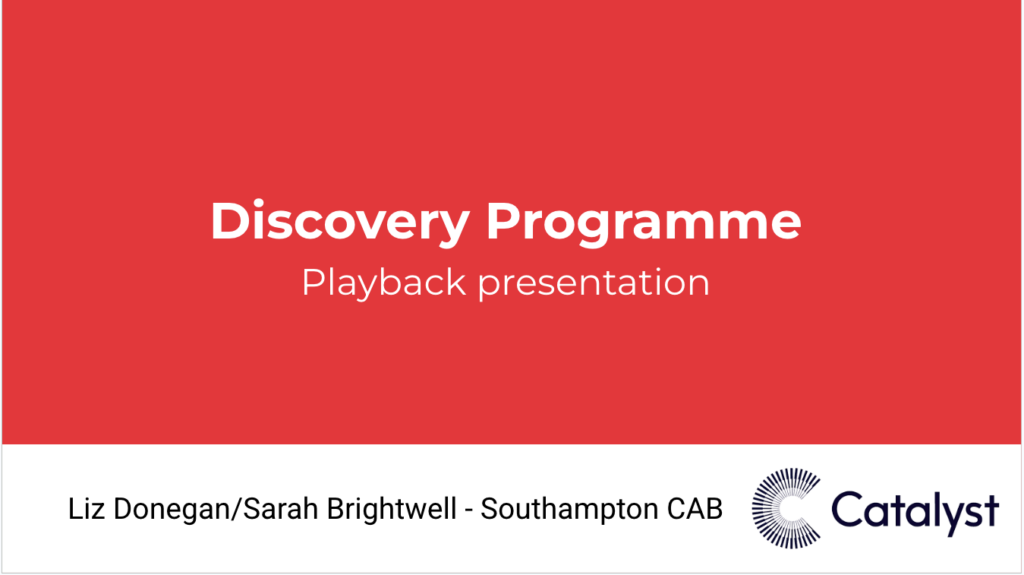
2. Storyboarding
A creative activity where participants create stories of what it’s like to experience the problem. They might do this using a storyboard template or other tool.
Storyboarding can also be used to create a new story, to demonstrate a potential solution to the problem and how the user might experience it.
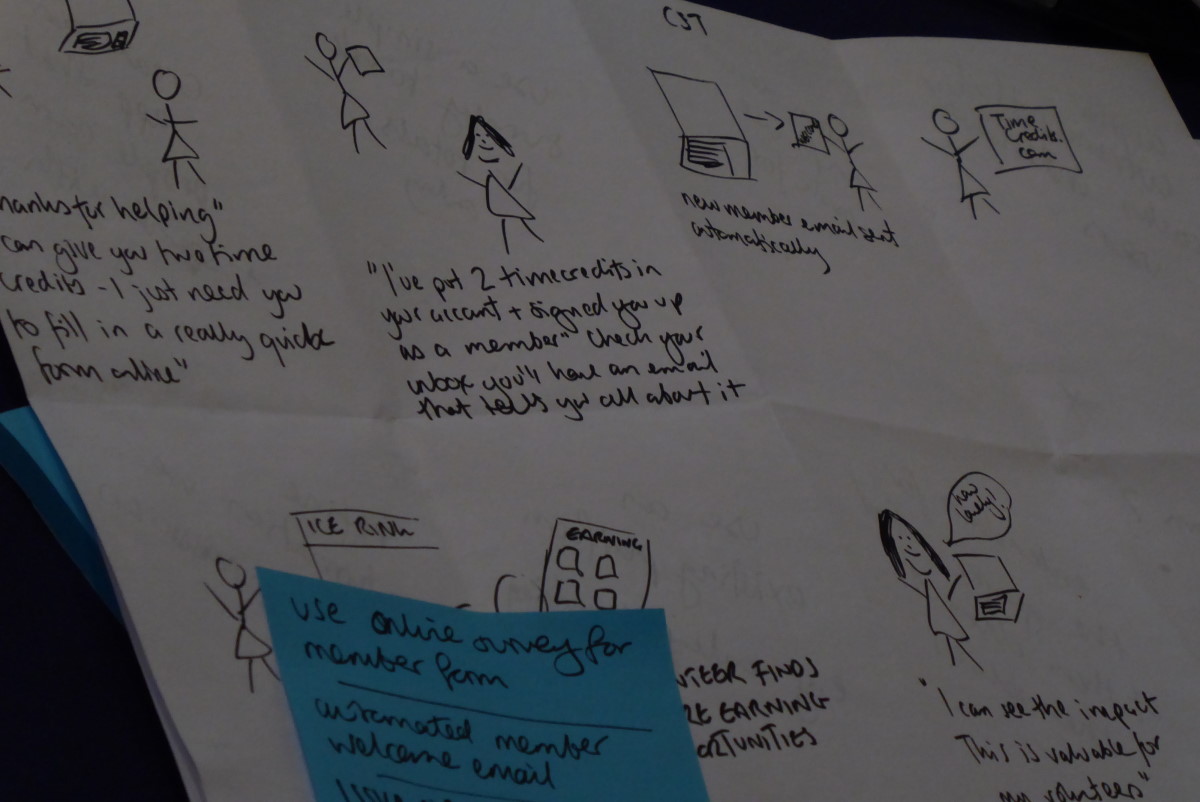
3. Ideation
Ideation usually involves generating lots of ideas using activities like Crazy 8’s. It can also involve selecting one or more ideas to sketch or make out of Lego or other materials.
Read: how to generate ideas when trying to solve a problem through digital.
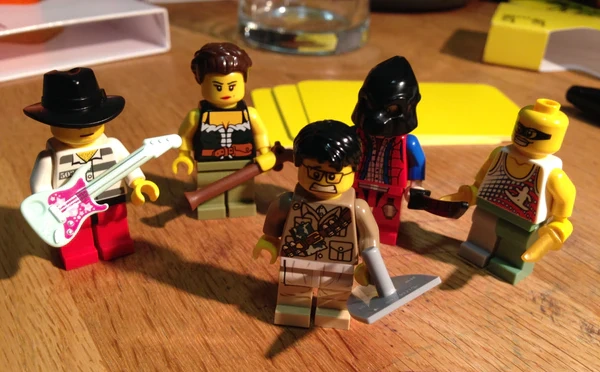
4. Testing existing solutions
This involves putting existing solutions in front of users and asking them to explore them. Doing this highlights problems or bad experiences, providing fuel for ideation.
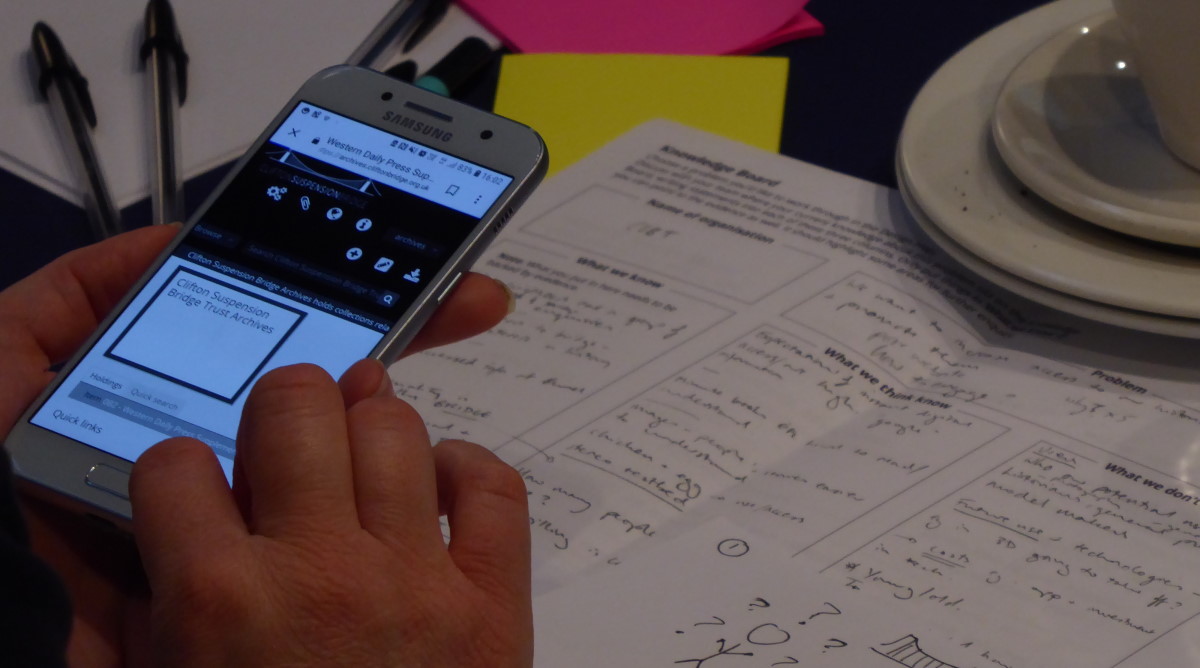
5. Testing new ideas
This involves showing journey maps, storyboards, sketches or other low-fi prototypes to people. Then you note their experiences and ask them to create something better using an ideation activity.
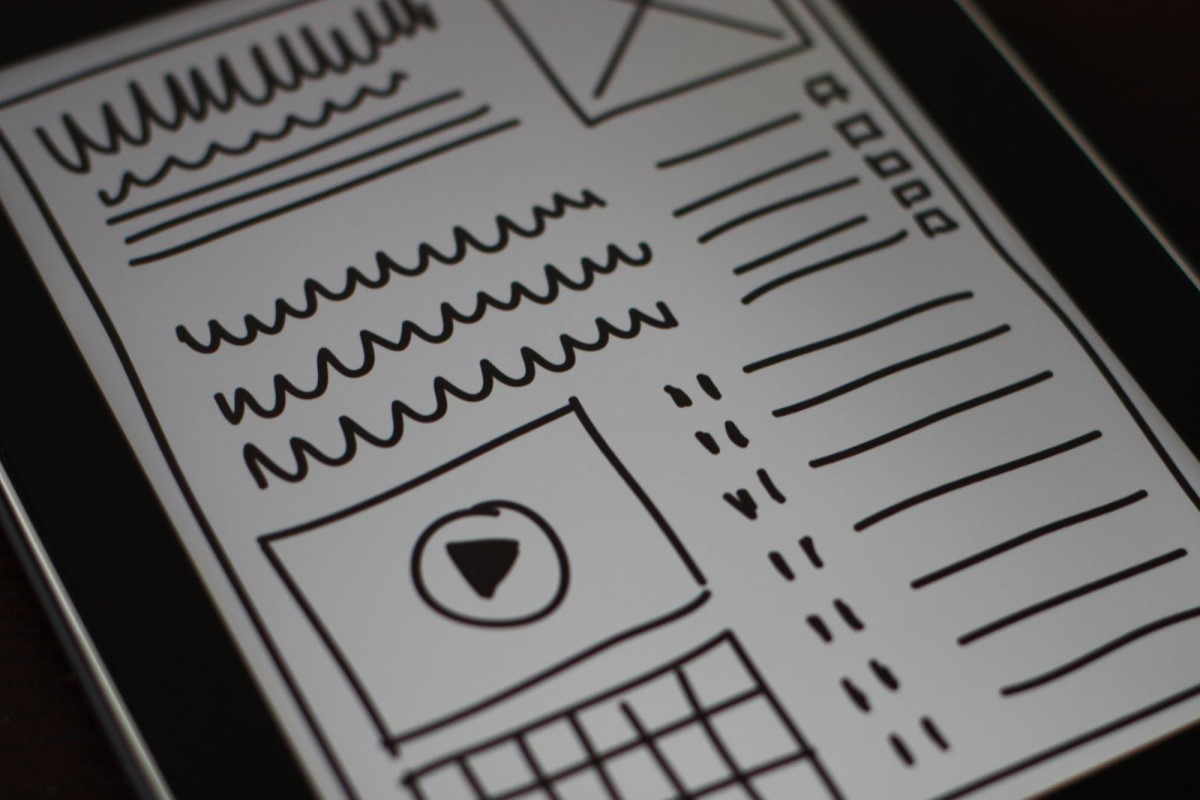
“The circle game is a great warm up. Provide people with a piece of paper with approximately 20 circles outlined, and a pencil. Ask them to turn as many circles as possible into a different thing in 1 minute. Could be a pizza, a sun, a clock, a football etc. It gets people’s brains thinking quickly and laterally.” – Clare Hopper, Head of Design, Economist Educational Foundation
14 tips for running a session
This is a list of the best tips. Based on my experience and those of others.
- Plan it well. Walk it through with a colleague. Remove the fluff.
- Invite a broad-range of people to attend, who will bring different perspectives and expertise.
- In-person sessions allow people to use their best skills – some might want to sketch out a solution on a pad while others might feel more comfortable verbalising their ideas.
- Use post-it notes and a wall or whiteboard.
- No surprises. At session start, explain the flow of the session.
- Develop a brief or clear tasks that you will ask people to do. Print these out.
- Establish credibility. Explain where the methods you’re using come from.
- Provide context at workshop start. Help participants to get warmed up and connected. Give them information about what you’ve learnt so far and the problems and opportunities as you see them at this time. Emphasise that this is an evolving project and everything is up for questioning and reflection.
- Encourage creativity. There are no bad ideas and its normal to not feel creatively confident. School and society doesn’t encourage high levels of creativity but this space is different.
- De-personalise it. Use words like ‘people’ rather than ‘you’. This helps people engage better.
- Use a fast pace once everyone is on the same page. But don’t go faster than the slowest person in the room can.
- Provide snacks and refreshments.
- 3hrs (plus breaks) is probably the longest length for a session.
- Pay or remunerate people for attending – everyone should be included.
Asking ‘why?’ during co-design sessions.
Remember co-design sessions aren’t decision making sessions. So when someone expresses a view or opinion on what they like or don’t like it’s good to ask them why this is. Asking why will help you get at the nugget of their experience that you need to hear. Then add this to your insight list or knowledge board.
Resources for running a co-design session
Toolkits
Many of the guides here use tools from, or similar to, Design Kit’s.
- Design Kit’s Co-creation session guide links to several great co-design activities.
- Kevan Gilbert’s facilitator’s guide is good for thinking through the finer details of your session. A must read.
Why co-design
- Unboxed’s Benefits of a co-design session is a short and simple explanation of why to run a session as a user research activity.
Example
- Gyngy Ifekete’s Designing a co-design workshop walks through a session plan. Then it shares insight into how the actual workshop went with different groups.
Commissioned by Catalyst
